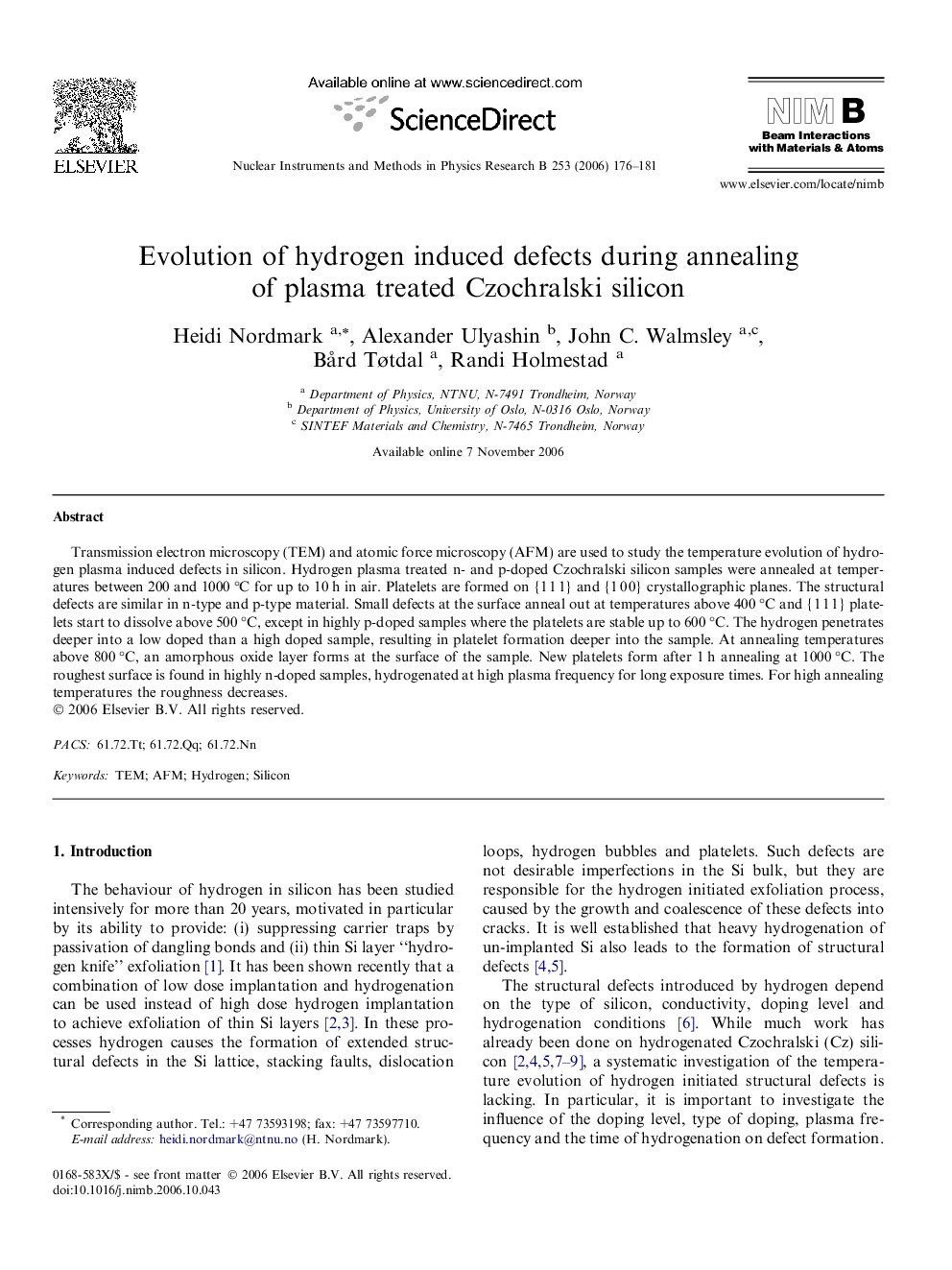| کد مقاله | کد نشریه | سال انتشار | مقاله انگلیسی | نسخه تمام متن |
|---|---|---|---|---|
| 1687945 | 1518761 | 2006 | 6 صفحه PDF | دانلود رایگان |

Transmission electron microscopy (TEM) and atomic force microscopy (AFM) are used to study the temperature evolution of hydrogen plasma induced defects in silicon. Hydrogen plasma treated n- and p-doped Czochralski silicon samples were annealed at temperatures between 200 and 1000 °C for up to 10 h in air. Platelets are formed on {1 1 1} and {1 0 0} crystallographic planes. The structural defects are similar in n-type and p-type material. Small defects at the surface anneal out at temperatures above 400 °C and {1 1 1} platelets start to dissolve above 500 °C, except in highly p-doped samples where the platelets are stable up to 600 °C. The hydrogen penetrates deeper into a low doped than a high doped sample, resulting in platelet formation deeper into the sample. At annealing temperatures above 800 °C, an amorphous oxide layer forms at the surface of the sample. New platelets form after 1 h annealing at 1000 °C. The roughest surface is found in highly n-doped samples, hydrogenated at high plasma frequency for long exposure times. For high annealing temperatures the roughness decreases.
Journal: Nuclear Instruments and Methods in Physics Research Section B: Beam Interactions with Materials and Atoms - Volume 253, Issues 1–2, December 2006, Pages 176–181